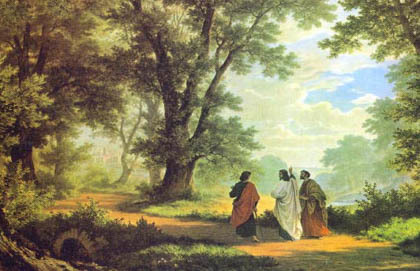We live in an era of “evidence-based” policy. A focus on facts has become essential to drive up standards, to improve efficiency, and to measure the performance of teachers. But that isn’t enough. At the risk of turning into the kind of inquisitive toddler with whom most of us quickly lose patience, I am going to insist on asking of education research: “Yes, but what it is for?”
I have found that relocating to a new culture requires a reframing because old habits and experiences work differently—or don’t work at all—on this side of the Atlantic Ocean. Slowly, I’ve been piecing together my mental map of the town where I live, connecting to new professional networks, and forming friendships. The whole things feels rather like a big research project. The practice of research is all about posing questions, answering them, and testing reality to see if it conforms to our understandings or challenges them. As things become familiar I will stop wondering why so much. No matter what, I will be able to say that I have mastered a different culture, satisfied my intellectual curiosity, and added a new experience to the list of things I’ve accomplished in my life. The trouble is that to leave it there is to be left with the nagging question: “Yes, but what it is for?”
My own immigration experience suggests to me that research is intimately connected to the question, “What is anything for?” There are competing imaginations about what education research is for because there are competing imaginations about what the universe is for—or even whether it is for anything at all. In “The Wasteland,” T.S. Eliot uses the image of Easter Saturday as a way to express what it feels like when there is no answer to that question of purpose:
After the torchlight red on sweaty faces
After the frosty silence in the gardens
After the agony in stony places
The shouting and the crying
Prison and palace and reverberation
Of thunder of spring over distant mountains
He who was now living is now dead
We who were living are now dying
With a little patience
On a dry, dusty road, about seven miles outside of Jerusalem, the historian and gospel writer Luke describes two people who felt like this. Trudging along, heads down, bewildered, utterly at a loss as to how to make sense of the roller coast of events in which the hope, these men found the purpose of the world to be seemingly defeated. The one whom they’d trusted to bring meaning and sense to their lives was dead and gone. Grief-stricken and sad, they were asking, “Yeah, but what is it for?”
Eventually, they would have stopped asking this question. Habits and routine fill the gap; we tend to lose our curiosity in the face of a loss of hope, or we focus on the things that seem achievable and which keep us occupied for the present, at least. Except that they met someone. A fellow traveler, happy to chat with them, a stranger who drew on the past to reinterpret the present, challenged their worldview and the familiar stories of their sacred texts. They did not recognize Jesus until they broke their fast together. Consider the sequence: they first travelled a road with a stranger, they told him about their lost hopes and deepest fears and they shared a meal with him as you would with a friend. We could describe this travelling together, this conversation, this growing friendship and this meal as the practice of resurrection. This experience rekindled their curiosity and their passion because it gave them back their bulwark, their hope, their motivation and their inspiration. Luke says that the “same hour” they returned to Jerusalem, to tell the rest of their friends the encounter that had given them back their purpose.
Intellectual curiosity and improving standards are important reasons to engage in education research, but on their own they merely shore up fragments against ruins. Something much more important can happen when we journey together in conversation in the context of hospitality, within worship and remembrance. It is the practice of resurrection which answers the question: “Yes, but what is it for?”






